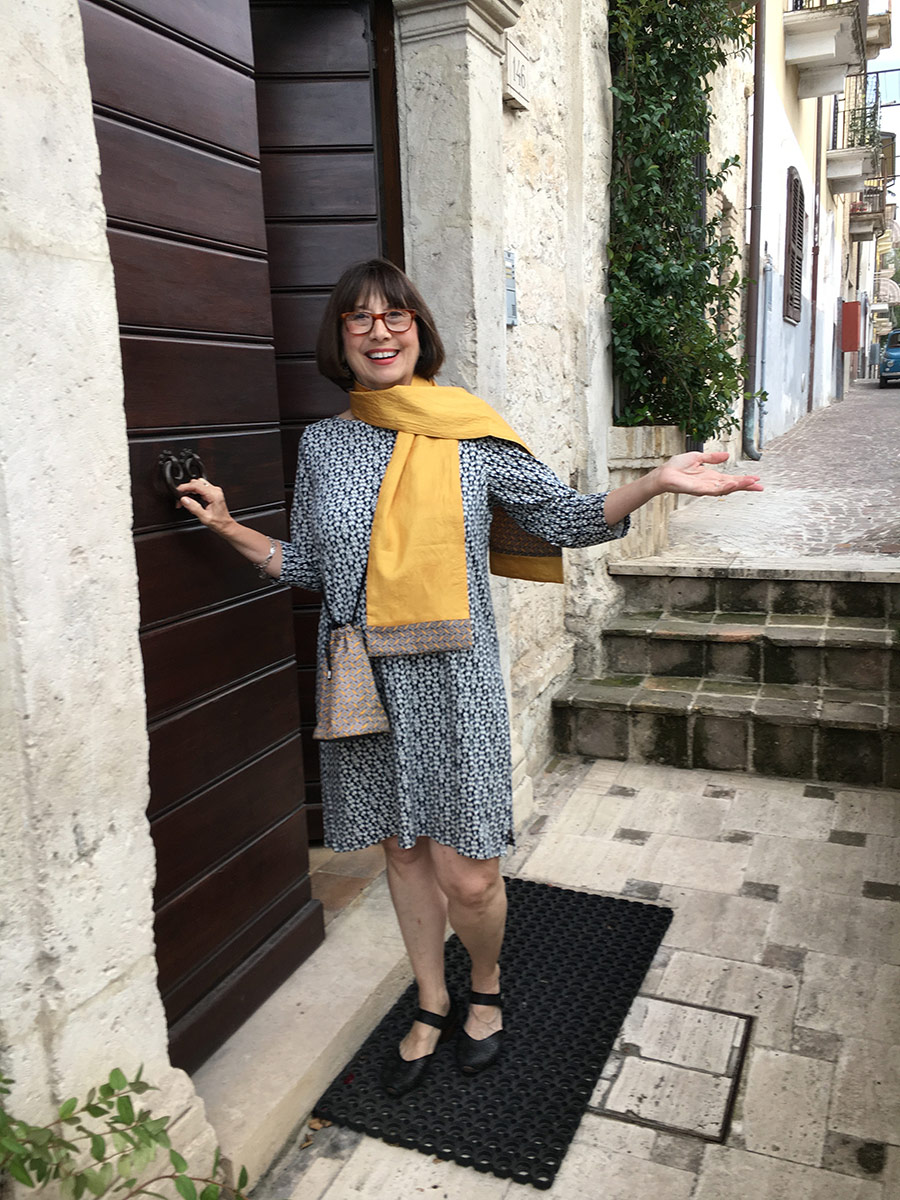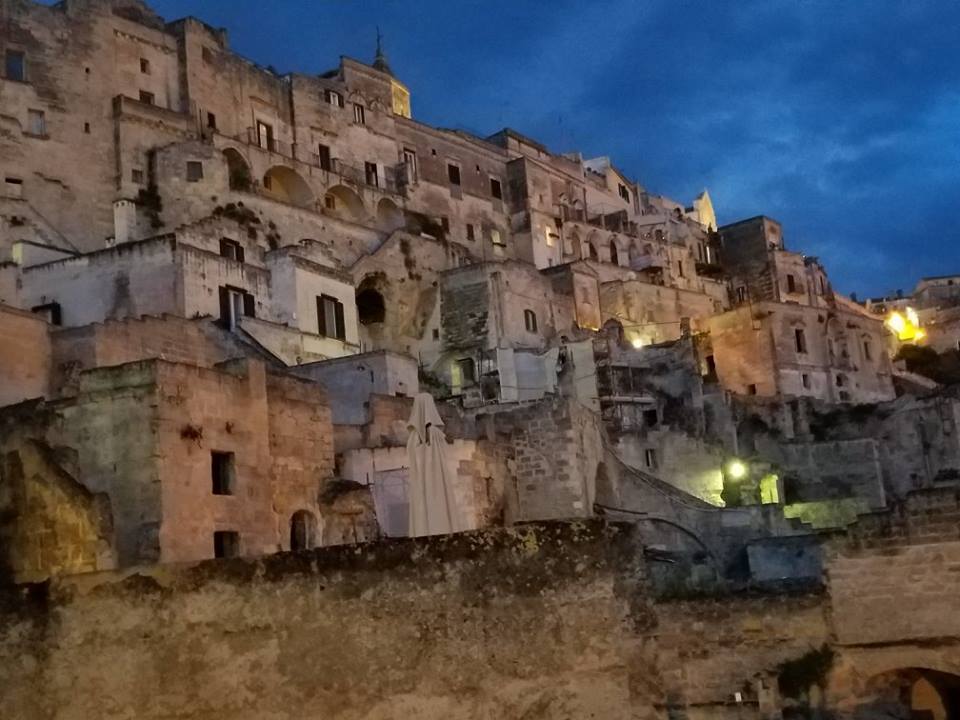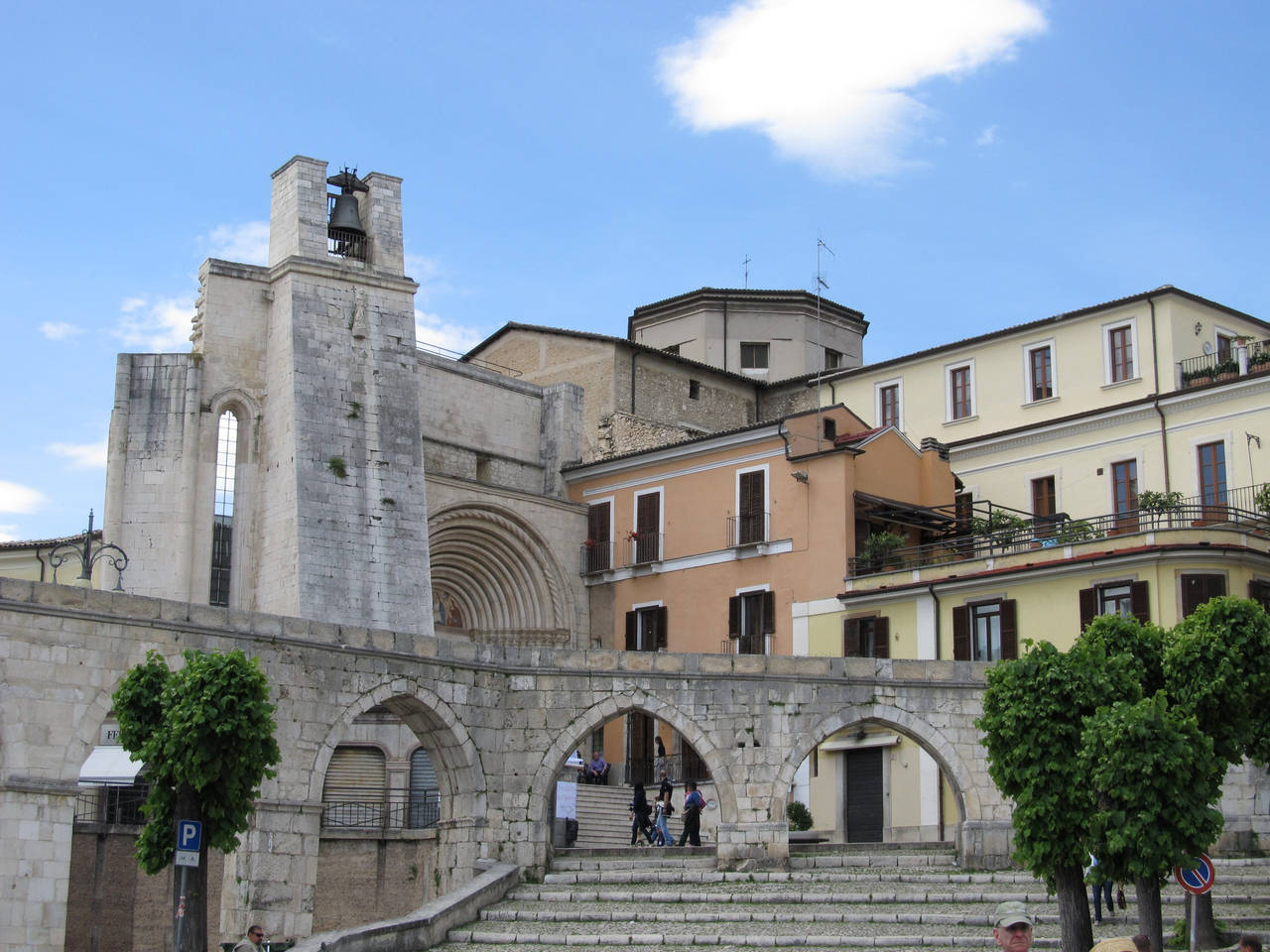Where the heck is Bevagna? — Tim Jenkins, responding to my text that we had arrived
Four of us were being driven from Rome’s Fiumico airport towards what would be our home away from home for a week in Cannara, just outside of Assisi, in Umbria. We were tired, and it was only 9:30 in the morning, and we were trying to be civil to each other, despite the long flight over and the fact that none of us had gotten very much sleep. Our sweet driver, Aldo, had piled our luggage into the back of his SUV-taxi and was carefully negotiating us around all the twists and turns required to get us out of the airport and onto the highway.
After a while, I smiled when I saw the sign on the A1 for Abruzzo. It made me realize that I would be coming back again in a scant six months, taking that very turn off the road to head to yet another adventure. Never had I had back-to-back trips to Italy like this. Life was good.
But we passed it by in favor of the signs to Assisi. It would be a two-hour drive to the agriturismo, La Fattoria del Gelso, so we settled in to admire the scenery and get to know each other a little. Two of the gals were friends, having met on a prior trip. One flew in from southern California and the other, from Memphis. The third lived in New York City, and then there was me, a native New Yorker now living in Virginia. We were all about the same age (anything over 50 strikes me as being in the same demographic group these days) and seemed very compatible. The week would bear that out; we became fast friends.
Aldo pulled off the secondary road we’d been driving on for a while and made the turn towards Cannara. Winding around what had recently been fields of sunflowers, the famous Cannara onions and other agricultural products, we saw one of those amazing Italian sites: a cemetery, protected by poplar trees and fronted by a huge stone structure with a formidable gate. We would go later in the week, and be awe-struck by the elaborate crypts and mausoleums and the loving care shown by the survivors of these tight-knit families.
Aldo made a quick left turn just past the cemetery and drove us down a stand of cypress trees for about 1/4 mile to our villa. It was beautiful. A stone farmhouse originally built in the 1700s and recently refurbished to be an 8-bedroom, 8-bath sight for sore, tired eyes. The owners, Bill and Suzy Menard — Americans from Maryland (more on them in a later post) — were mighty lucky to have found this place, with its good farmland, welcome swimming pool and close proximity to the best Umbria has to offer. The problem was, it was too early to get into our rooms.
We were about to head off to the village of Cannara on foot, when Marco, a prince of a guy who helps run the place when Bill and Suzy aren’t there, suggested instead that Aldo take us into the nearby town of Bevagna. He said that Cannara would be pretty much closed down at this time of day and that it didn’t offer too many options for lunch — which we were in desperate need of. So we piled our suitcases in the living room and climbed back into the taxi for our adventure in Bevagna.
The historic little town of Bevagna sits in the province of Perugia in the central part of Umbria. Both it and Cannara are on the flood plain of the Topino River (remember Topo Gigio, kids? Topino means little mouse). Bevagna, population approximately 3,000, was originally an Etruscan settlement and then a Roman outpost called Mevania, and the Roman walls and mosaics were evident all around town. We entered through the Porto Foligno, the town’s main entrance, which leads to the central square, Piazza Silvestri. There are three churches in Bevagna, including the 13th century church of San Francesco (he’s pretty big around here) which includes a stone (on the wall, protected by a grate) that is said to be the one St. Francis stood upon when he preached to the birds.
Bevagna, it turns out, is in the middle of white truffle territory and is also an enthusiastic purveyor of the region’s tasty Montefalco Rosso wines. As it was getting on towards lunch time, we walked around town to find a suitable spot. We found one, not yet open, that looked incredible and, as we later learned, is one of the premier foodie destinations in the region. Redibis (which means “I shall return” in Latin) is part of the boutique hotel L’Orto Degli Angeli and many of the dishes offered at Redibis are taken from the 100-year-old recipes of the current owner’s great grandmother, Caterina. How often do you get to enjoy fine dining in a building that is 20 centuries old? How often do you get to experience classical Umbrian recipes interpreted by a young, hip, accomplished chef? How many times do you get to stay in an historic hotel in an historic town — and even attend cooking classes? Stop thinking and, if you’re anywhere near Bevagna on your next trip to Umbria, go. I know I will.
With Redibis closed, we went off to find Aldo’s suggestion — La Delizie del Borgo, a small, friendly looking place right on Piazza Garibaldi. We arrived around 11:45 and were told we were “un troppo presto” – a little too early — but were advised to make a reservation and to come back in 45 minutes, which we did. We took time to walk around the town, going into churches and climbing up and down the very up-and-down streets, taking pictures. When we returned at 12:30, they were ready for us. The owner, Simone, escorted us to a table and before long, he learned that we were staying at Bill and Suzy’s place, which made all the difference. Suddenly we were no longer a bunch of silly americani who ate way too early — we were friends. He told us that he’d be coming to both New York and Washington, D.C. in a few weeks for some cooking adventures with the Menards; we exchanged cards and told him to give us a call when he arrived.
Turns out we ordered Simone’s favorite red wine, a Montefalco Rosso 2007, and he offered to bring out some of
the local specialties for us rather than have us order from the menu. We soon learned that Umbria is not only the “green heart” of Italy, but it is also Italy’s breadbasket. We ate the local Torta di Testa and all kinds of other white and whole grain breads slathered with chicken liver pate, olive tapenades, olive oil and garlic. There were plates of cheese and salami and even shaved white truffles. At one point, Simone brought to our table a small baking dish covered with a damp white napkin. When he pulled back the napkin, he revealed a bounty of fresh white truffles, worth I can’t imagine how much. He made us smell the cloth and the truffles, each one of us, because they are as precious as gold. Never has mustiness smelled so rich! For dessert, he offered us cantucci (mini biscotti cookies), which we dipped into small glasses of the local Sagrantino Passito di Montefalco, a sweet wine rather like Vin Santo. And before we left, Simone gave us a bag of rich nut and fruit cookies that we shared with the rest of the group on our last night.
It was quite a first day. What began as a jet-lagged slog to an unknown village ended, like so many Italian adventures do, with new friends, a new outlook and a full tummy. By now we were all excited to meet the rest of the group, so when Aldo returned promptly when he said he would, we climbed back into the van and drove back to Cannara, already armed with a fresh new story to tell.
Buon viaggio!

Linda Dini Jenkins is a card-carrying Italophile, travel planner, freelance writer, and amateur photographer. Travel is her passion, so writing about her travels just comes naturally. She hopes all her travelers find a way to express their joys, surprises, and fears as they travel and gives every traveler a nifty journal to help smooth the way. Learn more…






